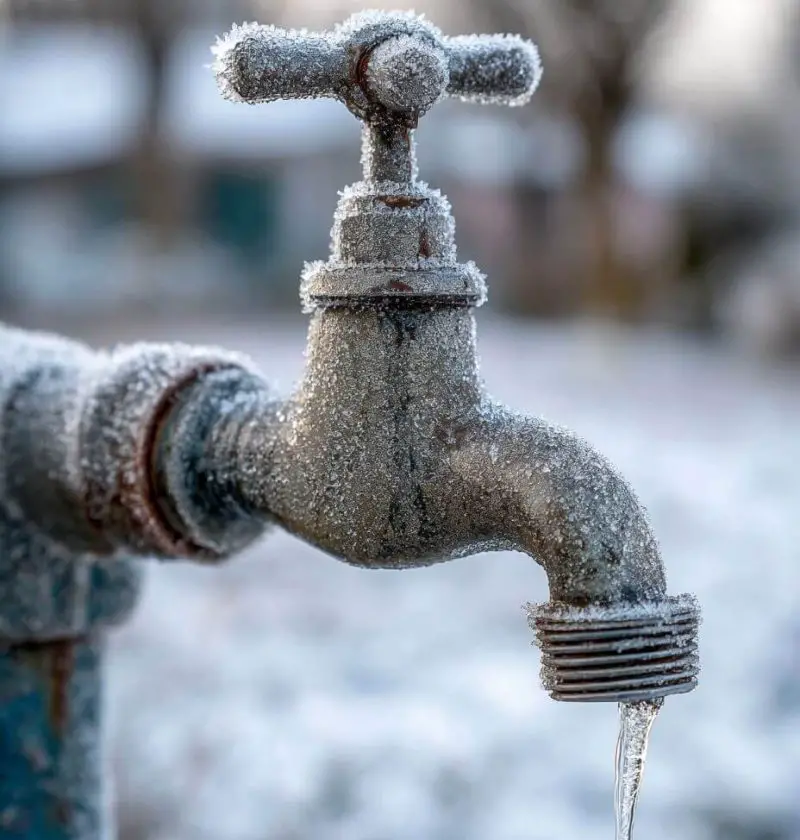Save This Recipe
Let me tell you—nothing sours a cozy winter morning faster than turning on the tap and hearing… nothing. That was me, two Januarys ago, bundled up like a marshmallow, standing in my kitchen with not a drop of water in sight. I’d ignored the warning signs, and sure enough—frozen pipes. I learned the hard way, but you don’t have to.
So if you’re staring at a silent faucet or worrying over a bitter cold snap, let me walk you through what really works—and what can go horribly wrong.
Why You’ll Actually Love Knowing This
-
Prevents expensive burst-pipe repairs (trust me, they add up fast)
-
Uses everyday items you already own
-
Avoids risky techniques that could cause a fire—or worse
-
Helps keep your home clean, dry, and stress-free all winter long
What You’ll Need (and What You Can Sub In)
Here’s the lineup of usual suspects:
-
A hair dryer — Not fancy, just one that gets warm and blows steady.
-
Warm towels — Soaked in hot water. Think spa day for your plumbing.
-
Portable space heater or heat lamp — Not required, but helpful for hard-to-reach areas.
-
Electric heating pad — Great if you have one lying around.
-
A dripping faucet — Old school but shockingly effective.
-
And a big ol’ dose of patience — No shortcuts here, folks.
Skip These, Please:
-
Blowtorches
-
Candles
-
Boiling water poured on pipes
(Yes, people really do these. No, it never ends well.)
Step-by-Step: Thawing Frozen Pipes the Right Way
1. First, Crack the Faucet
This isn’t just for show. A slight drip relieves pressure and gives melting water somewhere to go. Without an exit, pressure can build up and—bam—burst pipe. We’re not here for that drama.
2. Find the Freeze
Start by checking unheated spots: under sinks, in the garage, along exterior walls. Feel along the pipe—it’ll be icy cold at the problem spot, maybe even frosty.
3. Start at the Faucet End
Always. Work from the faucet back toward the frozen section. That way, water can trickle out as you thaw, keeping pressure low.
4. Warm It Up Gently
Now bring in your hair dryer. High heat, but don’t get too close—about six inches is perfect. Sweep it back and forth, covering all sides of the pipe. Slow and steady wins this race.
No hair dryer?
Warm towels to the rescue! Just soak, wring, and wrap. Replace them every 10 minutes or so—they cool fast.
5. Still Nothing? Heat the Room
Plug in a space heater or heat lamp nearby (safely away from flammables). Give the room a little sauna treatment. Pipes love that.
6. Don’t Bang. Don’t Chip.
No hammers, no screwdrivers. This isn’t an ice sculpture. Chipping at frozen pipes can cause microscopic cracks—or straight-up break them. Gentle heat only.
Bonus Tips You’ll Thank Me For Later
-
Open cabinet doors under sinks to let warm air circulate.
-
Keep garage doors closed—pipes behind those walls get cold quick.
-
Insulate exposed pipes with foam sleeves or even old towels in a pinch.
-
Seal drafts around windows and doors. Pipes hate cold breezes too.
When to Phone a Plumber (No Shame Here)
If it’s been hours and there’s still no flow, or you see bulging, cracked, or dripping pipes—call in a pro. Water damage isn’t something to gamble with, and a good plumber can save you a world of pain.
Defrosting Myths You Can Ignore
-
“All frozen pipes burst.” Nope. Most don’t—if you act fast and thaw them right.
-
“Just open the faucet all the way.” A drip helps, but won’t prevent freezing if the temps drop low enough.
-
“Use hot water on the outside.” It’ll cool too quickly and do next to nothing. Stick with dry heat.
Cozy Closings & Frozen Pipe-Free Wishes
Winter has its charm—fuzzy socks, hot cocoa, lazy Sundays with snow falling outside. Frozen pipes? Not on that list. But with the right know-how, they don’t have to wreck your day (or your drywall).
If you’ve got a story, a question, or even a better trick your grandpa swore by, drop it in the comments. I’d love to hear how you’re staying warm—and dry—this winter.
Stay toasty,

